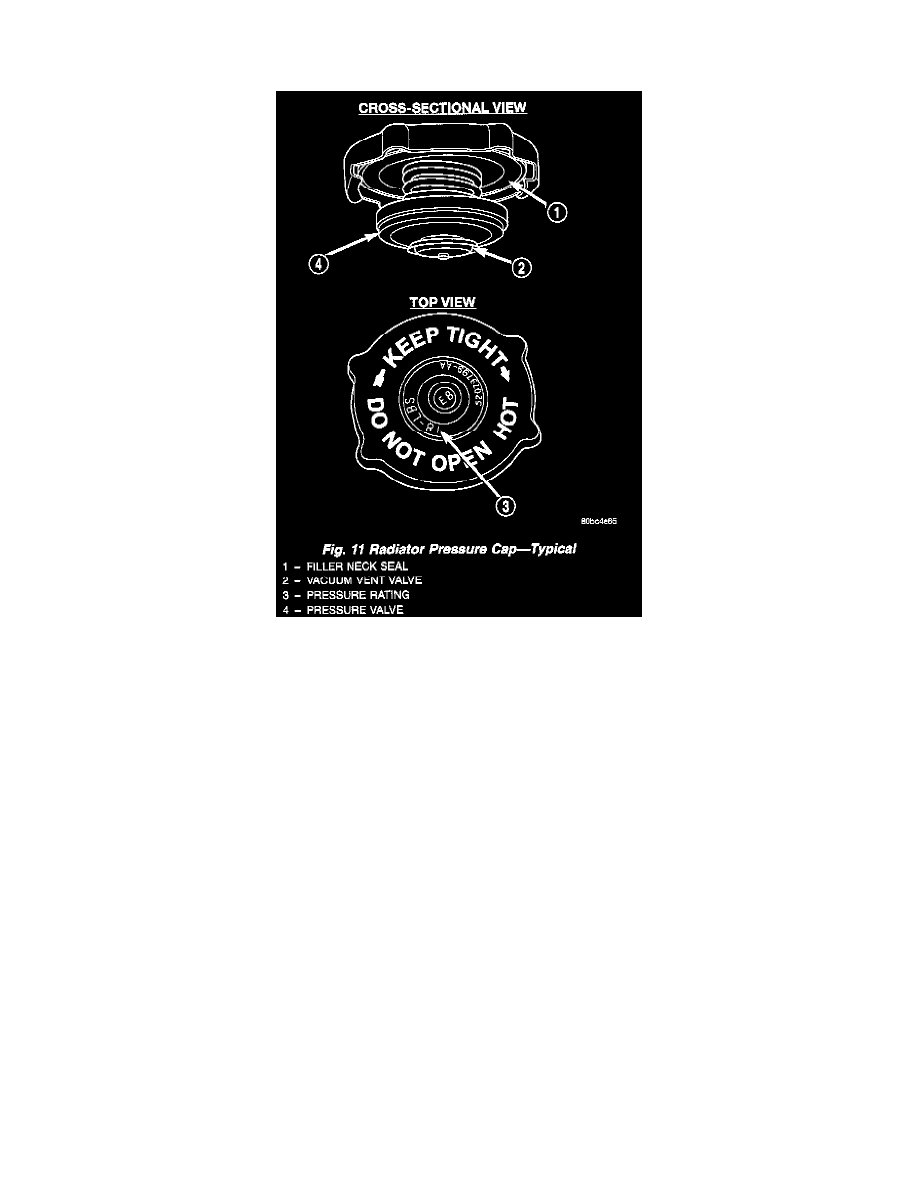Grand Cherokee 2WD V8-4.7L VIN N (2000)

Radiator Cap: Description and Operation
DESCRIPTION
All radiators are equipped with a pressure cap. This cap releases pressure at some point within a range of 124-to-145 kPa (18-to-21 psi). The pressure
relief point (in pounds) is engraved on top of the cap
The cooling system will operate at pressures slightly above atmospheric pressure. This results in a higher coolant boiling point allowing increased
radiator cooling capacity. The cap contains a spring loaded pressure relief valve. This valve opens when system pressure reaches the release range of
124-to-145 kPa (18-to-21 psi).
A rubber gasket seals the radiator filler neck. This is done to maintain vacuum during coolant cool-down and to prevent leakage when system is under
pressure.
OPERATION
A vent valve in the center of the cap will remain shut as long as the cooling system is pressurized. As the coolant cools, it contracts and creates a
vacuum in cooling system. This causes the vacuum valve to open and coolant in reserve/overflow tank to be drawn through connecting hose into
radiator. If the vacuum valve is stuck shut, or overflow hose is kinked, radiator hoses will collapse on cool-down.
